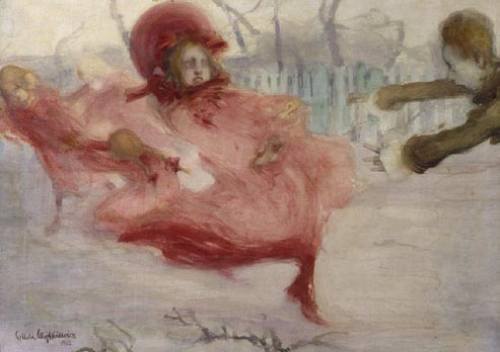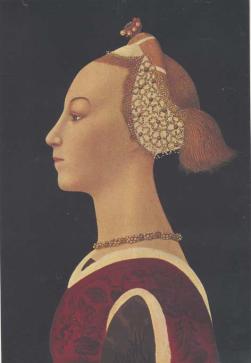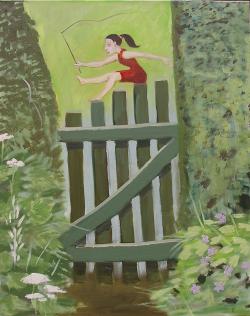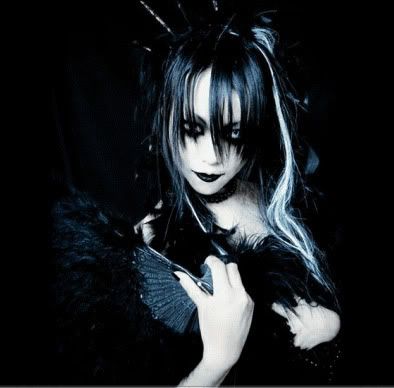Samstag, 21. Februar 2009
Witold Wojtkiewicz (1879 - 1909)
rabe500, 02:51h
Ich liebe diesen polnischen Maler. Z.B. "Frühlingshauch" 1905

(b Warsaw, 29 Dec 1879; d Warsaw, 14 June 1909). Polish painter. His unsystematic training began in 1898 at the Warsaw Drawing School and continued at the Academy of Fine Arts in Krak?w (1903-6). He anticipated Polish Expressionism and was one of the most intriguing and inventive artists of the period. An ironic sense and the grotesque motifs in his works bear a similarity to James Ensor's art. The roots of Wojtkiewicz's art, however, are local. He admired the modernist paintings of Stanislaw Wyspianski and Jacek Malczewski, and he held aesthetic ideas similar to those of the Romantic poet and painter Cyprian Kamil Norwid (1821-83) and of Stanislaw Przybyszewski (1868-1927) and Edward Abramowski, the authors of Expressionist manifestos. He began his short career as an illustrator and postcard designer. His first known work, a watercolour entitled Spring Is Approaching (1900; Warsaw, N. Mus.), already shows tragic irony, depicting dead birds on snow-covered ground. After 1905 he exhibited with the 'Group of Five', also known as 'Norwid's Group'. During their exhibition at the Galerie Schulte in Berlin (1907) Wojtkiewicz's 'strange harmony of tones, painful fantasy of drawing, pathetic and moving game of colours' caught the eye of Andr? Gide, who invited him to Paris and organized his one-man show at the Galerie Druet. Wojtkiewicz's later works (series entitled Monomanias, Circuses and Ceremonies) include oil and distemper paintings, watercolours, drawings and lithographs that explore the world of madness (e.g. Circus of Madmen, 1906) and the melancholic poetry of fairy tales (e.g. the Rape of a Princess, 1908; both Warsaw, N. Mus.).
Witold Wojtkiewicz (1879 - 1909)

(b Warsaw, 29 Dec 1879; d Warsaw, 14 June 1909). Polish painter. His unsystematic training began in 1898 at the Warsaw Drawing School and continued at the Academy of Fine Arts in Krak?w (1903-6). He anticipated Polish Expressionism and was one of the most intriguing and inventive artists of the period. An ironic sense and the grotesque motifs in his works bear a similarity to James Ensor's art. The roots of Wojtkiewicz's art, however, are local. He admired the modernist paintings of Stanislaw Wyspianski and Jacek Malczewski, and he held aesthetic ideas similar to those of the Romantic poet and painter Cyprian Kamil Norwid (1821-83) and of Stanislaw Przybyszewski (1868-1927) and Edward Abramowski, the authors of Expressionist manifestos. He began his short career as an illustrator and postcard designer. His first known work, a watercolour entitled Spring Is Approaching (1900; Warsaw, N. Mus.), already shows tragic irony, depicting dead birds on snow-covered ground. After 1905 he exhibited with the 'Group of Five', also known as 'Norwid's Group'. During their exhibition at the Galerie Schulte in Berlin (1907) Wojtkiewicz's 'strange harmony of tones, painful fantasy of drawing, pathetic and moving game of colours' caught the eye of Andr? Gide, who invited him to Paris and organized his one-man show at the Galerie Druet. Wojtkiewicz's later works (series entitled Monomanias, Circuses and Ceremonies) include oil and distemper paintings, watercolours, drawings and lithographs that explore the world of madness (e.g. Circus of Madmen, 1906) and the melancholic poetry of fairy tales (e.g. the Rape of a Princess, 1908; both Warsaw, N. Mus.).
... comment

 Paolo Uccello
Paolo Uccello

